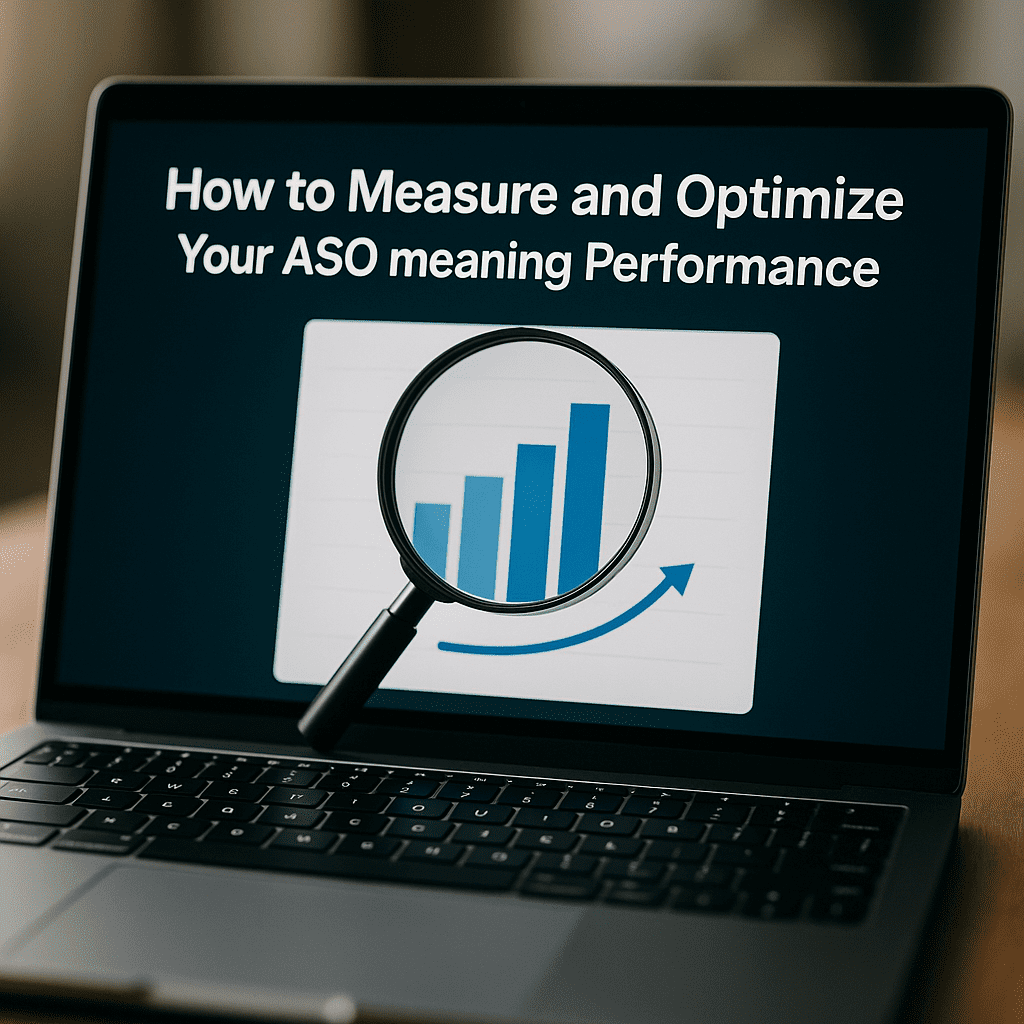
How to Measure and Optimize Your ASO Growth
In an app marketplace with over 5 million apps competing for attention, mastering App Store Optimization (ASO) is no longer optional. This guide will walk you through how to measure and optimize your aso performance step by step, ensuring you boost visibility, improve conversion rates, and drive sustainable growth. Whether you’re launching a new app or looking to reinvigorate an existing one, these best practices will help you put ASO meaning into practice today.
What Is ASO and Why It Matters
App Store Optimization (ASO) refers to the process of optimizing mobile apps to rank higher in an app store’s search results and top charts, thereby increasing visibility and downloads. ASO encompasses both on-page factors (metadata, visuals) and off-page factors (ratings, reviews).
Key reasons why ASO matters:
- Increased Discoverability: With millions of apps available, ranking for relevant keywords is critical.
- Higher Conversion Rates: Optimization elements like icons and screenshots directly influence download decisions.
- Cost Efficiency: Organic growth reduces reliance on paid user acquisition campaigns.
- Competitive Edge: Consistent ASO efforts help maintain and improve rankings over time.
According to industry data, Google Play hosts over 3.2 million apps and the Apple App Store nearly 1.9 million apps as of May 2024. Proper ASO implementation can make the difference between obscurity and success.
Key ASO Performance Metrics to Track
Measuring ASO success starts with monitoring the right metrics. Below are the primary categories and KPIs you need to watch.
Visibility Metrics
- Keyword Rankings: Track your app’s position for high-value keywords. Use specialized insights from Admiral Media to see where you can optimize.
- Category Ranking: Your rank within the app’s category impacts how often users find you via browse sections.
- Store Impressions: Monitor how frequently your app appears in search results or featured lists.
Conversion Metrics
- Views-to-Installs Ratio: The number of page views required to generate one install. Lower ratios indicate a more persuasive listing.
- Conversion Rate Optimization (CRO): The percentage of users downloading after viewing your app page.
- Click-Through Rate (CTR): Measures clicks on your app when it appears in search or browse views. Optimized icons and titles improve CTR.
User Feedback Metrics
- Ratings: Aim for an average rating of 4.5 or higher to boost credibility.
- Reviews: Quantity and sentiment of user reviews provide insights into user satisfaction and areas for improvement.
Practical Steps to Optimize Your ASO Performance
Now that you know what to measure, let’s dive into actionable steps to enhance your ASO strategy.
1. Keyword Optimization
- Research High-Value Terms: Use ASO tools like Splitmetrics suite to identify keywords with strong search volume and manageable competition.
- Strategic Placement: Include primary keywords in your app title, subtitle (iOS), and description (Android). Maintain natural readability.
- Localization: Translate keywords and metadata for target markets. Localized listings can increase downloads by up to 128% in some regions.
2. Visual Elements Optimization
- Icon Design: Choose contrasting colors and simple shapes to stand out. A/B test multiple icon variants to find the best performer.
- Screenshots and Videos: Highlight core features in the first two screenshots. Employ short preview videos (<30 seconds) to showcase user flows.
- Feature Graphics (Google Play): Design a compelling banner that communicates value and sparks curiosity.
3. Metadata Optimization
- Catchy App Title: Incorporate your primary keyword without exceeding character limits (30 for iOS, 50 for Android).
- Persuasive Description: Use bullet points, short paragraphs, and bold text for readability. Highlight unique selling points early.
- Promotional Text (iOS): Update this field regularly to showcase new features or seasonal events without a full app update.
4. User Feedback Management
- In-App Review Prompts: Trigger review requests after positive user actions (e.g., completed a level or achieved a goal).
- Timely Responses: Reply to both positive and negative reviews within 48 hours to show you value feedback.
- Iterative Updates: Prioritize feature requests and bug fixes from reviews in your release roadmap.
Advanced ASO Strategies
Once you’ve optimized the basics, these advanced tactics can drive further gains.
A/B Testing
Systematic experimentation can reveal the highest-converting combinations of metadata and visuals.
- Test different app icons to measure impact on CTR.
- Experiment with screenshot order and captions to boost installs.
- Compare alternative app descriptions and feature highlights.
Seasonal Updates
Align your app listing with holidays, events, or trending topics:
- Themed icons and screenshots during festive seasons.
- Promotions or sales highlighted in your description.
- Limited-time features announced via promotional text.
Competitor Analysis
Monitoring competitors uncovers gaps and opportunities:
- Identify keywords that competitors rank for but you do not.
- Analyze top-performing icons and visual styles.
- Review feature sets highlighted by leading apps in your category.
Measuring ASO Success
Establish a regular monitoring cadence to stay on top of performance trends:
- Weekly: Track keyword rankings and category positions for sudden shifts.
- Monthly: Analyze CRO, CTR, and ratings changes to measure impact of recent updates.
- Quarterly: Evaluate overall strategy effectiveness and pivot as needed.
Leverage tools and services from Admiral Media to automate reporting and gain deeper insights.
The Future of ASO
The app store ecosystem evolves continually. To stay ahead:
- Monitor updates to App Store and Google Play ranking algorithms.
- Stay informed on emerging ASO trends via industry blogs and webinars.
- Explore AI-driven optimization tools for real-time recommendations.
- Adapt to changing user search behaviors and preferences.
Conclusion
Mastering how to measure and optimize your aso meaning performance is an ongoing process that demands attention to data, user feedback, and market trends. By systematically tracking key metrics, implementing best practices, and testing new strategies, you’ll build a sustainable growth engine for your mobile app.
Remember, consistent refinement and creativity in your ASO approach will keep you ahead of the competition. Start applying these tactics today and watch your app’s visibility, downloads, and user satisfaction climb.
Need expert help with your ASO strategy? Contact Admiral Media for professional ASO services tailored to your specific app needs.
